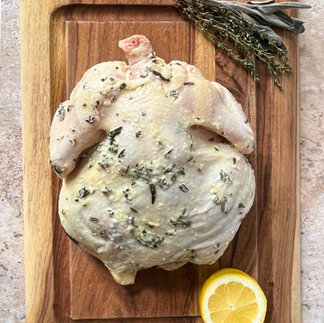How to Make the Traditional Japanese UMAMI Seasoning: Shio Koji (Salt Koji)
- Hitomi
- Aug 4
- 3 min read
Updated: Sep 8
Salt Koji, or Shio Koji, is one of the easiest and most versatile fermented seasonings to make at home. This natural marinade enhances umami while keeping your dishes gut-friendly and low in additives. Whether you're short on time or prefer the traditional slow-fermenting method, here’s how to make your own Shio Koji two ways — with or without a fermentor!

CONTENTS
WHAT IS SALT KOJI, THE UMAMI SEASONING?
Salt Koji/Shio Koji (塩麹) is a traditional Japanese seasoning made by fermenting koji rice with salt and water. It naturally enhances flavor through enzymatic activity that breaks down proteins and starches, transforming them into amino acids and sugars. It not only adds umami, but also helps tenderize meats and boosts digestion.
GUT HEALTH BENEFITS OF SALT KOJI |
Salt Koji supports gut health with its natural enzymes and probiotics. The enzymes help break down protein, starch, and fats—making food more digestible and easier on the gut. It also helps reduce inflammation, and increase the bioavailability of nutrients. Plus, it’s a wholesome alternative to high-sodium sauces or chemical seasonings. A flavorful and functional way to boost gut health!
INGREDIENTS | (Makes about 260ml)
100g dried rice koji
30g coarse sea salt
130ml filtered water (soft water preferred if available)
INSTRUCTIONS |
Method 1: Quick Fermentation Using a Fermentor in 8 Hours
Sterilize your tools: Place all utensils and containers in boiling water for at least 8 minutes. Use only heat-resistant, BPA-free glass or plastic. Let air dry completely.
In a sterilized container, combine rice koji and sea salt. (I doubled the ingredients in this video example)
Add filtered water and mix well until all grains are evenly coated.
Place the container in your fermentor and set it to 58°C - 60°C (136°F - 140°F) for 8 hours.
Stir every 2-3 hours
After 8 hours, check the texture, and taste.
Ready when:
Koji grains are soft and break easily
Smells sweet (like banana or chestnut)
Mild saltiness with deep umami (sweetness)
Transfer to a sterilized jar and refrigerate. Lasts up to 3 months.
Method 2: Traditional Room Temperature Fermentation (2 Weeks)
Sterilize your tools (same as above).
Mix the koji, salt, and filtered water in a sterilized glass jar.
Loosely cover the jar with a clean lid or breathable cloth.
Store in a cool, dark spot (room temperature around 68–72°F / 20–22°C).
Stir once daily to distribute the microbes.
After about 10–14 days, check for these signs:
The koji grains have softened and easily break apart
You see small bubbles (a good sign of healthy fermentation!)
The aroma is sweet, like banana or chestnut
The taste is less salty, with a mellow, deep umami flavor
Once ready, seal and refrigerate. Good for up to 3 months.
HOW TO USE SALT KOJI |
Use 2 teaspoons or 10g of salt koji for every 100g of meat, or fish as a marinade. The meat gets tender even after 30 minutes! You can also add it to soups, salad dressings, or stir-fries for a natural umami boost. It acts as a seasoning and tenderizer all-in-one!
SHOPPING TIPS |
RICE KOJI:

Look for dried rice koji at Japanese or Asian grocery stores in the refrigerated section or online. Brands like Cold Mountain, Marukome, or Hikari are reliable. Japanese supermarkets often carry a few different kinds of KOJI. Online retailers like Nijiya, Mitsuwa, Marukai, Amazon, or Japanese Pantry shops are good options!
FINAL THOUGHTS |
Shio Koji is a powerhouse ingredient in gut-friendly Japanese cooking. Whether you're using a fermentor for speed or embracing the slow, traditional way, both methods create a flavorful and healthy seasoning you'll reach for again and again.


















Comments